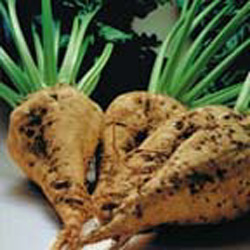Behind the Bit |
| Beet pulp: When to feed, how to feed Part 1 Posted: 05 Jan 2010 01:25 PM PST  Riley is still a young and growing boy, but look athis metabolic indicators: Easy keeper. Natural cresty neck. Fat deposits in all of the key places. There's a grazing muzzle in his future. Riley is still a young and growing boy, but look athis metabolic indicators: Easy keeper. Natural cresty neck. Fat deposits in all of the key places. There's a grazing muzzle in his future.He's not getting much in the way of feed -- just a ration balancer, Pro-Add Ultimate from Progressive feed. It's low starch (7%) and high protein (55%). Naturally, he makes up for it by hoovering down hay, and I'd like to find a way to fill his tummy at feeding time. What about beet pulp? Harv already gets beet pulp, and ecently I've been thinking of giving Riley a small amount of beet pulp. But what is beet pulp? What is its nutritional value? How might it benefit or harm Riley? Beet pulp comes from the manufacture of table sugar (from sugar beets). The pulp is basically what's left over when all of the sugar has been extracted from the beet. The process is so efficient, there is barely any sugar left in the pulp. Beet pulp isn't quite a forage, and it isn't quite an energy feed like grain. It's pretty unique, so it's probably good to review it's characteristiscs... The facts on beet pulp Beet pulp is...
Stay tuned for Part II... |
| You are subscribed to email updates from Behind the Bit To stop receiving these emails, you may unsubscribe now. | Email delivery powered by Google |
| Google Inc., 20 West Kinzie, Chicago IL USA 60610 | |

0 comments:
Post a Comment